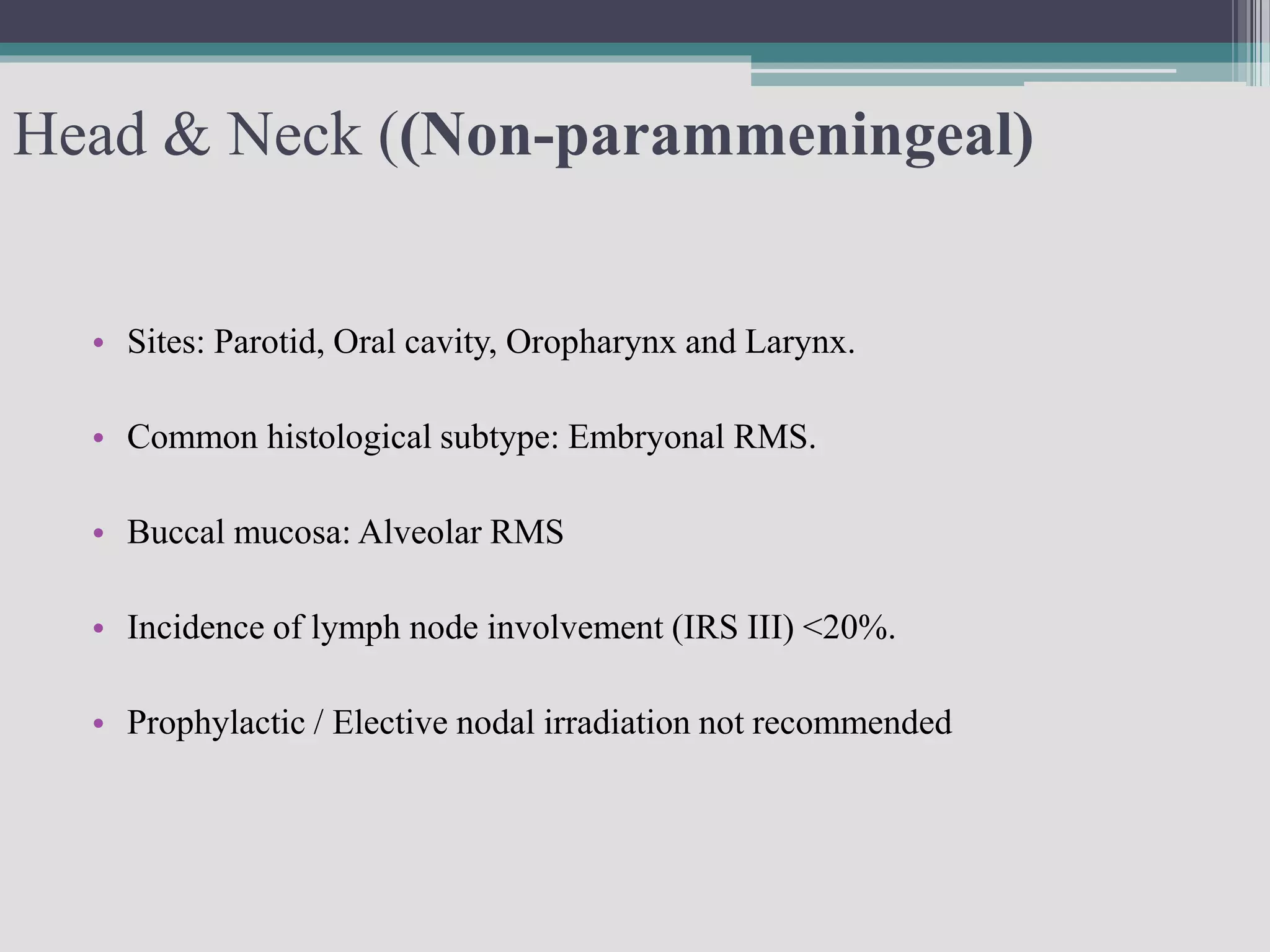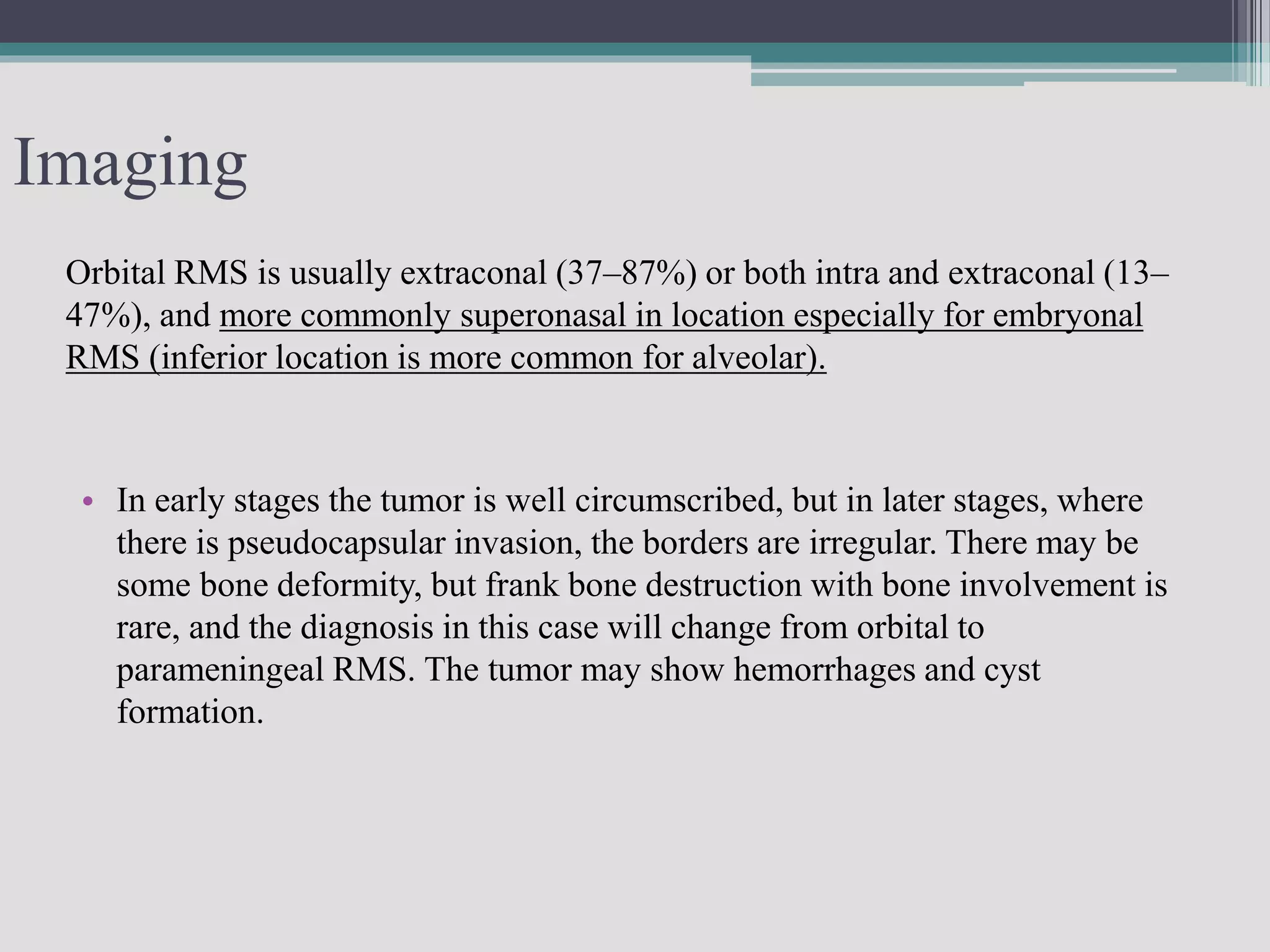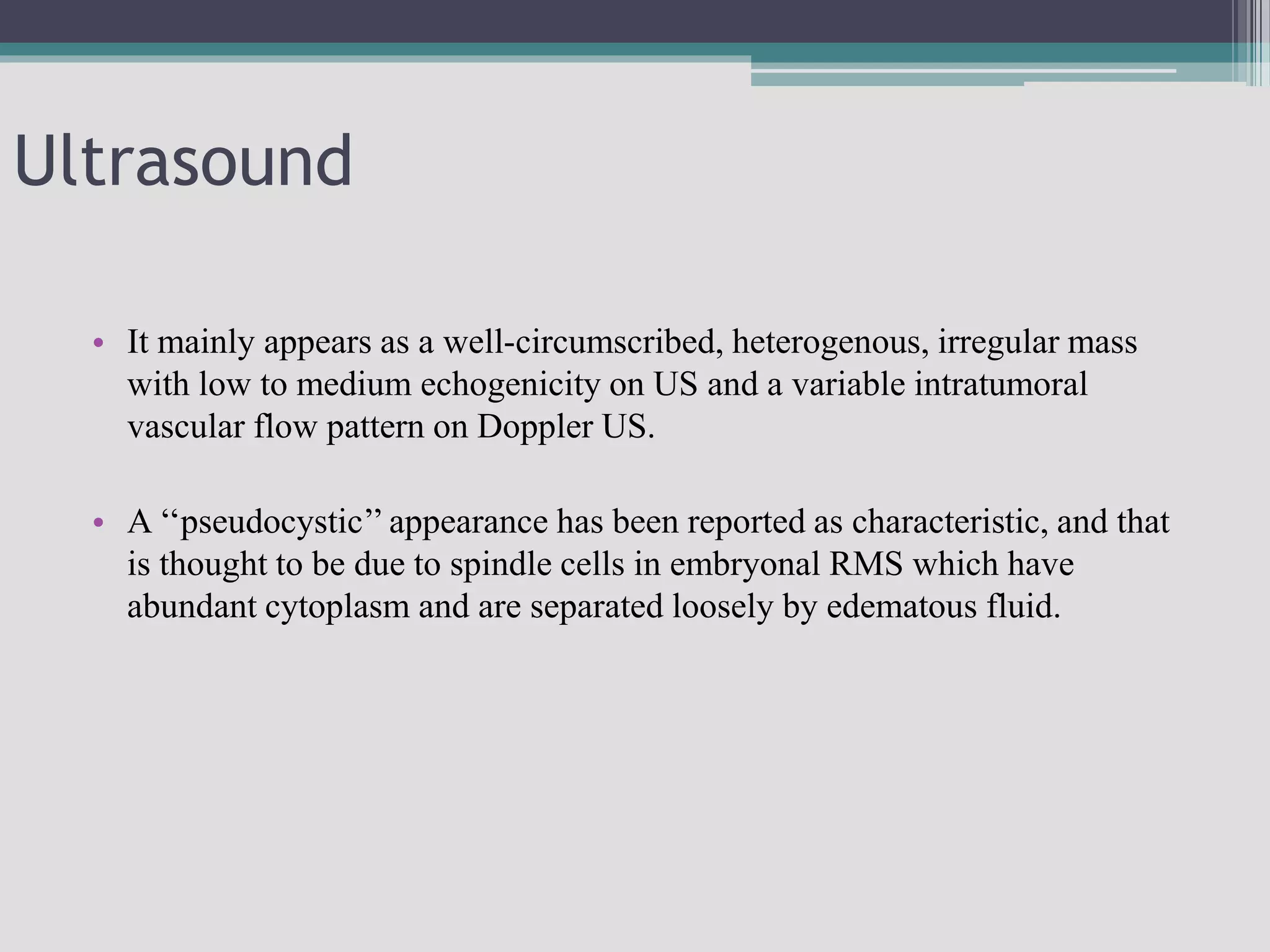Orbital rhabdomyosarcoma (RMS) is the most common soft-tissue sarcoma in children, primarily affecting the head and neck area, and is characterized by various histological subtypes with differing prognoses. Diagnosis involves imaging, biopsy, and immunohistochemical studies, while treatment strategies have evolved to include surgery, chemotherapy, and radiation therapy based on the disease stage. Recent advances in radiotherapy aim to maximize local treatment efficacy while minimizing long-term side effects, particularly crucial in the pediatric population.






![Site of involvement
• Head and neck (including the orbit and parameningeal areas [35%]
• Genitourinary tract (including the bladder, prostate, vagina, vulva, uterus,
and paratesticular area [26%], and Extremities (19%)
• 20% of children present with disseminated disease - commonly involves
the lung
Comprises 4% of all pediatric malignancies, with 10% of all cases occurring in the orbit.](https://image.slidesharecdn.com/rabhdomyosarcoma2-210409200157/75/Orbital-Rhabdomyosarcoma-7-2048.jpg)












































